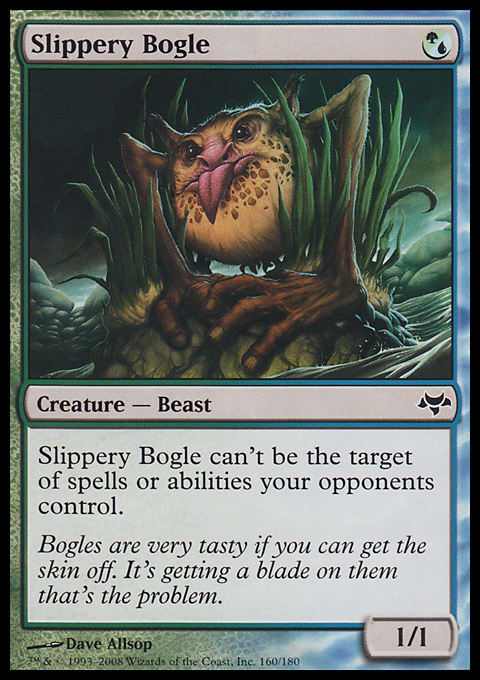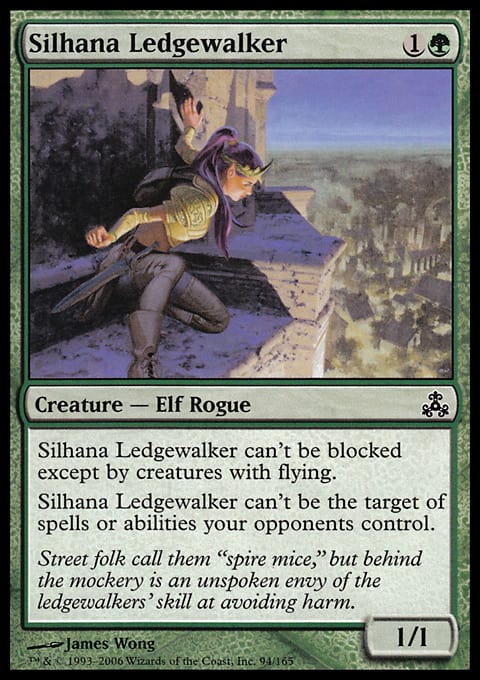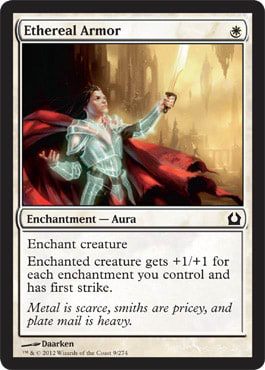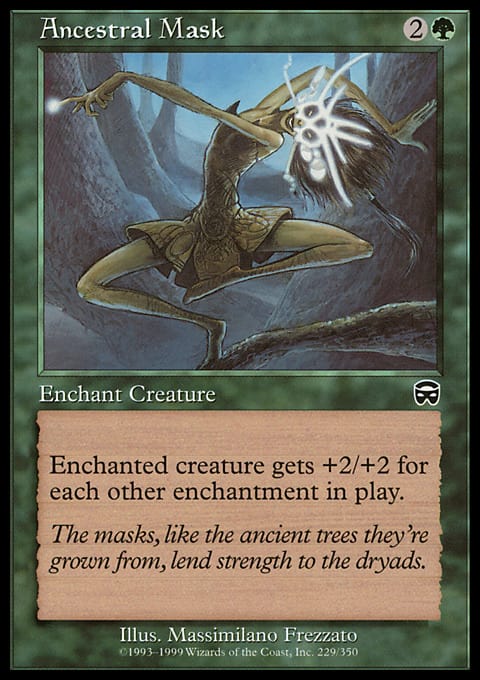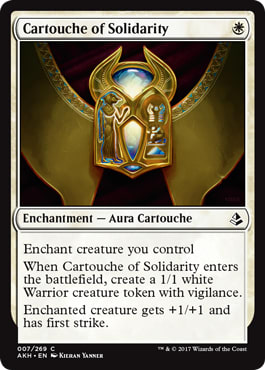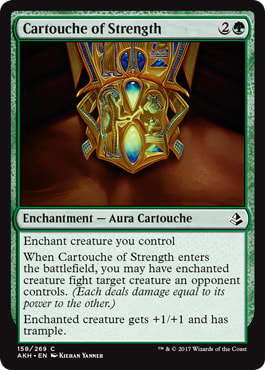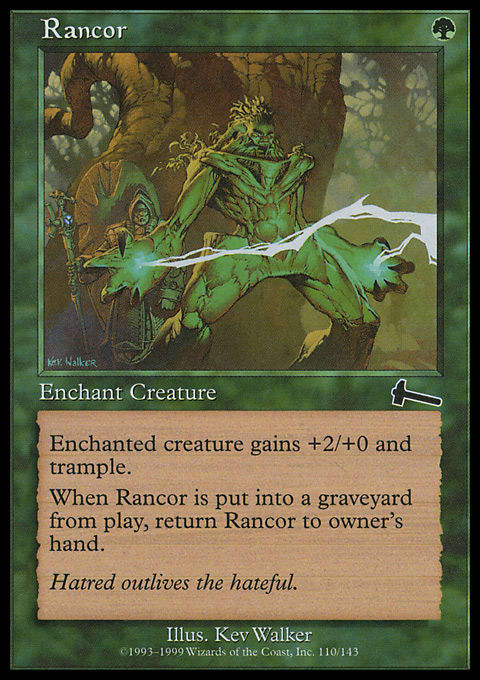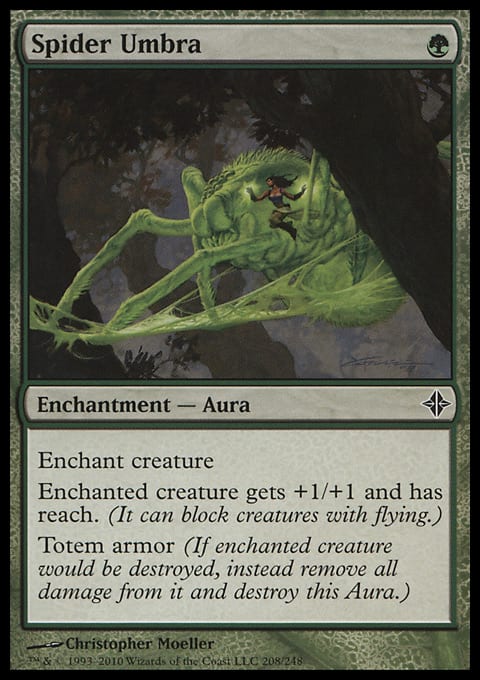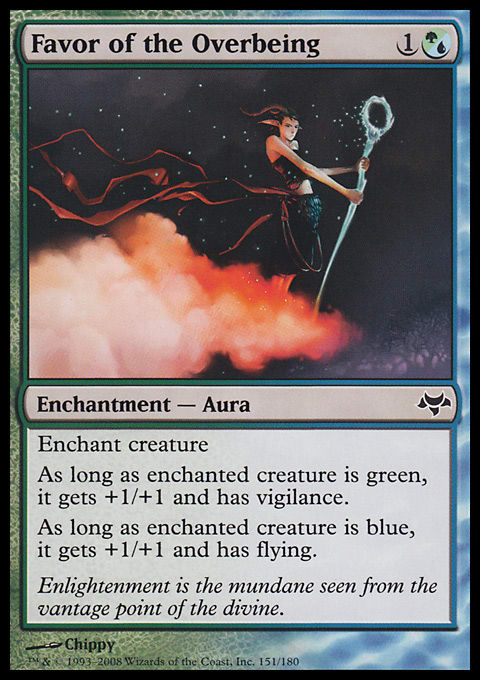Interaction is a key part of Magic. The back and forth action between players lends to wild skill plays that make it the game we know and love. In Pauper, decks like Izzet Delver, Boros Monarch, and the various Tron builds all want to remove creatures, counter spells, and overall control the game to reach a point where they can kill their opponents. Not every deck wants to be playing the interaction game though. Some just want to go all-in, run over their opponent, and be done with it. There's few archetypes more true to this than Bogles. With Ultimate Masters bringing a ton of reprints for the deck, now's a perfect time to discuss the ol' slippery boys!
Bogles, also known simply as Hexproof, is a deck that revolves around small 1/1 Green creatures with the Hexproof mechanic. They usually cost one mana but some, like Silhana Ledgewalker, cost a little extra for some added bonuses. How do such innocuous little creatures take down your opponents so quickly? By suiting them up with powerful auras, of course! With multiple cards attached to them, these tiny creatures can take down even the mightiest of foes.
Bogles | Pauper | PR0boszcz, Competitive League 11/28/2018
- Creatures (14)
- 2 Heliod's Pilgrim
- 4 Gladecover Scout
- 4 Silhana Ledgewalker
- 4 Slippery Bogle
- Enchantments (28)
- 1 Cartouche of Strength
- 3 Cartouche of Solidarity
- 4 Abundant Growth
- 4 Ancestral Mask
- 4 Armadillo Cloak
- 4 Ethereal Armor
- 4 Rancor
- 4 Utopia Sprawl
- Lands (18)
- 1 Plains
- 12 Forest
- 1 Ash Barrens
- 4 Blossoming Sands
- Sideboard (15)
- 2 Fling
- 2 Lifelink
- 2 Natural State
- 2 Spell Pierce
- 2 Standard Bearer
- 2 Young Wolf
- 3 Gut Shot
The game plan for Bogles as such is quite simple. Get your Bogle down and suit it up is usually the basic idea, but it can be a bit trickier than that. Sequencing things can help tremendously. For example, let's say you start with a hand that features one of each: Forest (with no other lands), Slippery Bogle, Utopia Sprawl, and Cartouche of Solidarity. Some people will just want to force out the Bogle. This is especially understandable in a format where Spellstutter Sprite exists.
Let's say you play the Bogle first. This is how it might play out on the board, in order of turns:
- Play Forest, then cast Slippery Bogle.
- Cast Utopia Sprawl targeting the Forest, naming White.
- Cast Cartouche of Solidarity targeting Slippery Bogle, and anything else you may be able to do.
Assuming we drew no lands, which happens quite often when playing Pauper Bogles, we wouldn't be able to suit up our Bogle until turn three at the earliest by playing the Bogle first. If we play the Utopia Sprawl first, however...
- Play Forest, then cast Utopia Sprawl targeting the Forest, naming White.
- Cast Slippery Bogle, then cast Cartouche of Solidarity targeting it.
Check it out, we got there on turn two! Now on turn three, we not only have a powered up Bogle but can also suit it up even further. If we draw another land we can even put something big like Armadillo Cloak or Ancestral Mask on it for crazy damage! Sometimes, though, it might be better to still play out a Rancor and Ethereal Armor first to push damage through and then play the Cloak or Mask afterward. As such, Bogles is all about figuring out what aura works best per any given situation. Let's have a look at the ones in the list above:
These two cards are your haymakers and what you use to make your Bogle exponentially massive. While Ancestral Mask gives you a much larger creature, it does nothing on its own, so in the rare case where it's the only aura on your Bogle, it essentially just reads, "Enchant Creature." Ethereal Armor, on the other hand, does work well on its own, not only giving your creature +1/+1 but First Strike as well! Because it's cheaper and will often do more in a game, it's arguable that Ethereal Armor is the better of the two. Do note that when using Ancestral Mask, it counts all enchantments. If your opponent is rocking Spidersilk Armor, Pestilence, or you're in a mirror match be sure you count what's on their board as well.
Two Cartouches, two totally different uses. Cartouche of Solidarity was a pretty big game changer that enabled Bogles to start performing better in the metagame. One thing the deck has long struggled with is Edict effects such as Chainer's Edict, Diabolic Edict, or Geth's Verdict. As Bogles is a "go tall with one creature" kind of deck, it was very soft to these effects. In addition to having the possibility of hitting a second Hexproof creature, you're now able to create a creature to help withstand those pesky Edicts with Cartouche of Solidarity. This replaced Hyena Umbra which, while a great card in its own right, just didn't protect against said Edicts.
Cartouche of Strength, as stated before, serves a different purpose. Obviously it can, for one, help clear the board of problematic creatures, like a Wellwisher or an Ulamog's Crusher to let you go in for the kill. Sometimes, however, it's a little subtler. Let's say you're on the draw and your opponent plays a Standard Bearer on turn two after you play a Bogle on turn one. Now you can't cast any auras targeting your Bogle.
Most of them, that is.
Cartouches have one key line of text on them. It reads: "Enchant target creature you control." As such, you cannot legally target your opponent's Standard Bearer with these Cartouches. This allows you to use Cartouche of Strength to rid yourself of that bothersome Flagbearer in order to suit up your Bogles properly and win the game!
Lastly we have two cards that give your creatures the keyword Trample. Cartouche of Strength gives your creatures this as well, but really wants to be doing something else. As such, these are your go-to ways to go over your opponents' creatures. Rancor is cheap and thus easy to cast. Better still, even if your creature does end up dying, the classic aura just keeps coming back over and over again.
Armadillo Cloak, on the other hand, does a little bit more. Costing three mana to Rancor's one, it can be a bit tough to drop, but if it does it's a beating. Unlike Rancor, the Cloak grants extra toughness, making your creature more difficult to kill. It also has the amazing bonus of gaining you extra life every time your creature deals damage!
Be careful, though, as the wording on this card is old. As such, while it may seem the same as the Lifelink mechanic we see today, it's quite different. Rather than the life gain happening simultaneously with the damage as it would with Lifelink, the life gain will actually be a trigger that goes on the stack. This is important because if your opponent would deal enough damage to kill you before the life gain happens, you won't gain the life and will simply lose the game. In addition, because this uses the stack, you can actually stack the ability with multiple Armadillo Cloaks! One other cute trick to consider as well is that in a pinch you can stick this on an opponent's creature. Provided an attack won't kill you, you'll actually gain the life from the life gain trigger, not your opponent, essentially negating all but their strongest attacks! Don't laugh, it works.
These are a couple other options worth considering as well. Spider Umbra and Favor of the Overbeing are generally for the Delver heavy metas. Stick a Favor of the Overbeing and a First Strike aura onto a Bogle and watch your Delver opponent rapidly realize in horror their inability to win. In more aggressive metas, Lifelink helps edge out wins by keeping yourself in the game long enough to take your opponent down. Usually there's one or two copies in the sideboard, but sometimes it's the right move to bring in a little more. There's lots of other off-color options out there as well, just waiting to be found.
In addition to this suite of iron pumping auras, we've got a couple other cards to help round out the package. Abundant Growth obviously helps smooth out your mana while both drawing cards and adding to your overall enchantment count. On the creature side, Heliod's Pilgrim lets you find whatever aura you need to fit your current circumstance to get you there to win. If you want something a little different, you can opt to run Aura Gnarlid as a big evasive creature to get in massive damage even if you can't suit it up right away. It's fragile to Doom Blade-style effects, but it definitely packs a wallop. Lastly is a card not in this list but sometimes makes the cut in the form of Khalni Garden. This land helps you churn out small creatures that can eat Edicts, block attackers, or even act as a pumpable creature in a pinch.
As stated before, the gameplay is simple but can be very rewarding. Despite that, you want to be as disciplined as possible with your hands. You want a good mix of lands, creatures, and castable auras. It's entirely possible to get hands with two of the above, but not the third, and keeping medium-grade hands with the hope of getting an explosive start is dangerous. I can't tell you how many times I kept a three land hand with all the best auras but no creature in the hopes that I'd get there only to find those hopes swiftly dashed away. If you can make it work, as top players like Magic Online user Carvs have in the past, you can bang through leagues at a breakneck speed. And in a time where Delvers are front and center in leagues, what better time than now to break them out?
Lastly, there's one other cool thing about this deck. I've talked a lot about taking your game to other formats as well in the past. Now more than ever, it's a strong way to play. The new Format Points cover every format, so while you build up your stockpile with Pauper, you can do the same in Modern! That's right, I'm talking about taking Bogles into the biggest competitive format today.
Bogles | Modern | John Perna, SCG Regionals Orlando
- Creatures (12)
- 2 Kor Spiritdancer
- 2 Silhana Ledgewalker
- 4 Gladecover Scout
- 4 Slippery Bogle
- Instants (2)
- 2 Path to Exile
- Enchantments (26)
- 1 Cartouche of Solidarity
- 1 Gryff's Boon
- 2 Spirit Mantle
- 3 Hyena Umbra
- 3 Leyline of Sanctity
- 4 Daybreak Coronet
- 4 Ethereal Armor
- 4 Rancor
- 4 Spider Umbra
- Lands (20)
- 1 Forest
- 1 Plains
- 1 Dryad Arbor
- 2 Wooded Foothills
- 3 Temple Garden
- 4 Horizon Canopy
- 4 Razorverge Thicket
- 4 Windswept Heath
- Sideboard (15)
- 1 Spirit Link
- 1 Worship
- 2 Choke
- 2 Damping Sphere
- 2 Gaddock Teeg
- 2 Seal of Primordium
- 2 Stony Silence
- 3 Rest in Peace
The biggest jump here is the lands, but really if needed, you can find budget options as you build your deck up. Recent reprintings of cards like Kor Spiritdancer, Daybreak Coronet, and Gaddock Teeg out of the sideboard really helps the price as well. If you look at the core of the deck, though, it's very much the same as what you're rocking in Pauper. The mana is better, however, so you don't need to rely as much on mana fixing auras to help you along the way, instead you just go all in.
With a new format on the horizon thanks to Ultimate Masters, it's hard to say what's going to make an impact. If the format is heavy on the Delvers and the aggressive strategies, though, it's not hard to say that Bogles will make an appearance. After all, sometimes the old ways are still the best. Even more so if your opponent simply can't interact with it. I hope to hear about how you stomp out your competition with some amazing Mulldrifter-chomping Bogles at your next Pauper event!

















